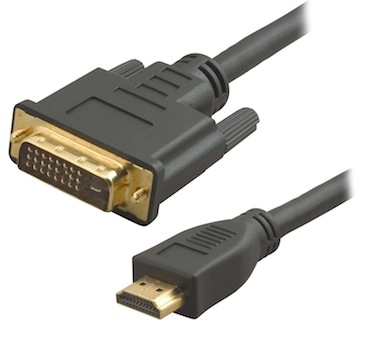In 2010, Intel, AMD and PC makers Dell, Lenovo, Samsung, and LG announced that they would phase out VGA connectors (or ports) by 2015. Their reasoning: digital formats such as DisplayPort and HDMI allow for slimmer laptop designs and higher resolution with deeper color than is possible with VGA.
In early 2012, analyst firm NPD In-Stat released a report stating that DVI ports will also disappear from PCs over the next five years, setting the stage for “standardization” on HDMI and DisplayPort. There are several other issues driving the phase-out of VGA and DVI interfaces. One is that VGA does not allow for content protection, so it may be phased out due to digital content license agreements. A more practical issue for manufacturers and users is the size of the connectors: VGA and DVI connectors with thumb screws are difficult and sometimes impossible to accommodate in ultra-slim notebook and netbook designs; connecting and securing these cables to monitors is difficult in confined spaces.
So why do we still need two digital interfaces?
DisplayPort and HDMI are very different technically, and each has a different product focus. HDMI is the de-facto standard in home theater and is used widely on HDTVs, and some PCs and monitors include HDMI to enable connectivity with HDTVs and other consumer electronics gear. DisplayPort is focused on PC, monitor, and projector applications as a replacement for DVI and VGA where high performance is critical, and allows backwards and forwards compatibility over standard cables. The DisplayPort connector is compatible with HDMI signals, enabling product interoperability. And, to make content owners happy, DisplayPort 1.2 supports HDCP v1.3, ensuring that protected content such as Blu-ray disc movies may be easily viewed over a DisplayPort connection that includes HDCP support.
Video connectivity standards seem to change or “evolve” every time a new video source or display technology is introduced. This presents obvious problems for integrating new components into existing systems. The problem is not always the change, since rarely do standards disappear completely. The challenge is juggling multiple standards; old standards must often co-exist with new standards.
Sorting out the connectivity issues is complicated by the fact that it involves different formats, standards, and physical connectors. Before digital, the VGA format (developed by IBM in 1987) was the most common video signal format, and it was considered “standard” although it was never adopted by an official standards-making body. For many years, most PCs output VGA, and displays and other sources accepted it. VGA uses the common DE-15 connector, still seen on many PCs.
That’s all changing with digital video signal formats. For commercial AV applications, the most common digital formats are DVI, HDMI, DisplayPort, and SDI. Within each format, there are multiple variants and connector types.
PLAN YOUR CONNECTIONS
Whenever possible, try to determine the connector type of all possible sources and displays before any installation project or ad hoc presentation. Check to see if there are matching connectors on installed AV devices (projectors, flat-panels, switchers) and connectivity interfaces (pop-up access panels or wall plates, etc.). If you’re lucky, the issue is easily resolved with a single format cable of the appropriate length. When that is not possible, there are three courses of action:
1. USE ADAPTERS
Adapters provide the simplest solution, but with digital video signal transmission, there can be drawbacks too. For example, don’t expect to get audio from a DVI connector (it’s video only). Also, most adapters are passive devices, and won’t convert from digital to analog, or vice versa.
2. USE AN ACTIVE SIGNAL CONVERSION DEVICE
A very common scenario in which connectors present problems are group presentations, where multiple presenters each bring their own laptop. But combining multiple formats is considerably easier than it used to be, by using presentation switchers. A presentation switcher accepts and scales a wide range of video signals to a common, high-resolution output rate.
